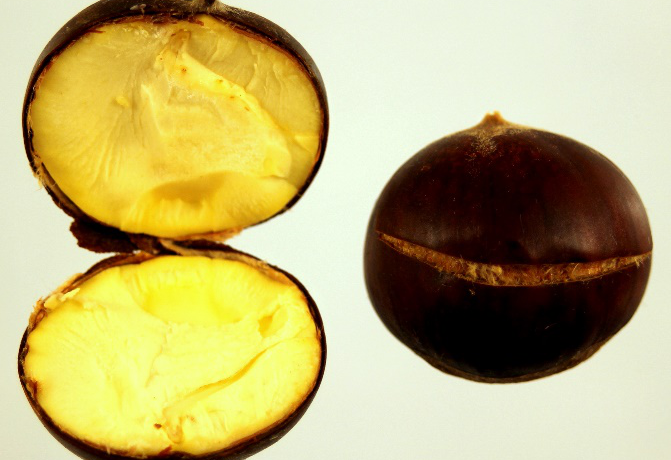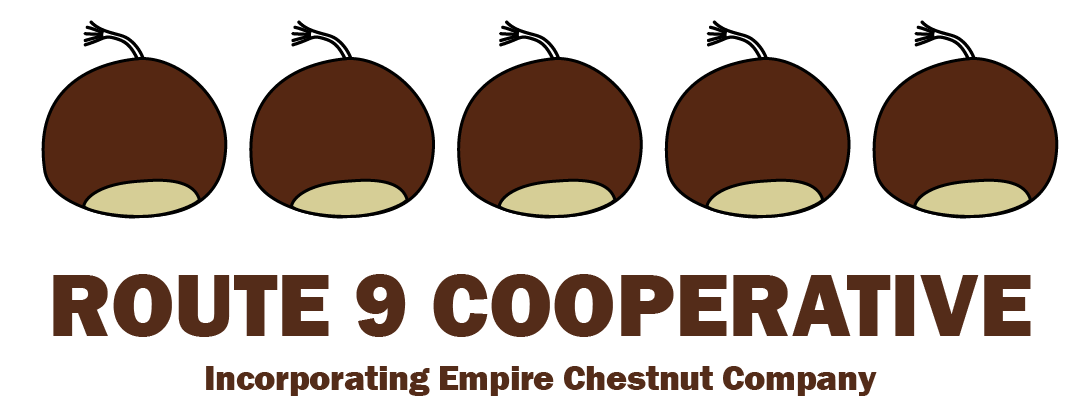Your cart is currently empty!
Preparing & Recipes
Even though chestnuts need to be kept moist for maximum shelf life, they get much sweeter and easier to peel if they are allowed to dry for at least a few days before eating; just until the kernel begins to shrink. However, once they’ve started to dry, they need to be eaten or kept in a drying environment. If they start to dry then get wet again (often happens in the fridge), they will quickly mold. If they get so dry that they become hard, then they can be peeled and cooked in water. They will swell up and soften just like cooked fresh chestnuts.
Roasted Chestnuts
Make a cut through the shell or chop the chestnuts in half to prevent bursting. Spread them on a cookie sheet and bake at 400 F for 10-15 min. Better yet, roast them over a fire in a chestnut roaster until the kernels begin to brown. Remove shells before eating.

To Peel Chestnuts
Prepare chestnuts as for roasting. It’s easier to peel them if they are cut in half. Heat chestnuts in a 400 F oven for about 5 min. Remove the shells and inner skins while the chestnuts are still warm. Peeled kernels can be further cooked by simmering in water for use in recipes.
